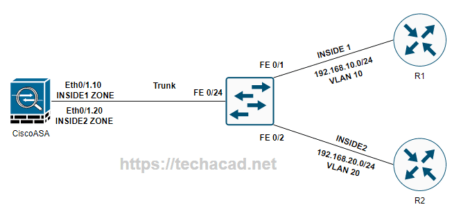What is Cisco ASA?
Cisco ASA (Adaptive Security Appliance) is a security device that provides a range of security services including firewall, VPN, and intrusion prevention. One of the key features of the Cisco ASA is its ability to assign security levels to different interfaces and network segments. If you want to learn more about Cisco ASA, read our below article.
recommended reading
Cisco ASA Security Levels
Security levels are a way of defining the level of trust that the Cisco ASA assigns to traffic passing through it. The security level of an interface or network segment determines the types of traffic that are allowed to pass through the device and how that traffic is treated.
The Cisco ASA assigns security levels to interfaces and network segments using a scale from 0 to 100, with higher numbers representing higher levels of trust. The security level of an interface or network segment is determined by the administrator and can be configured using the ASA’s command-line interface or web-based management interface.
By default, the Cisco ASA assigns a security level of 100 to the inside interface, which represents the highest level of trust. This is because the inside interface represents the network that is being protected by the ASA and is assumed to be trusted. The outside interface, which represents the Internet or other untrusted networks, is assigned a security level of 0 by default.
When traffic passes through the Cisco ASA, the security level of the source and destination interfaces or network segments is compared. If the security level of the source is higher than the destination, the traffic is allowed to pass through the ASA. If the security level of the destination is higher than the source, the traffic is blocked by the ASA.
recommended reading
In addition to the security level, the Cisco ASA also uses access control lists (ACLs) to further control the flow of traffic through the device. ACLs are used to define rules for traffic based on factors such as the source and destination IP addresses, port numbers, and protocols.
The Cisco ASA also includes a feature called security level tagging, which allows the administrator to specify the security level of individual packets as they pass through the device. This allows for more granular control of the flow of traffic through the ASA and can be used to override the security level assigned to an interface or network segment.
Conclusion
In summary, the Cisco ASA’s security level feature is a powerful tool for controlling the flow of traffic through the device and protecting a network from potential threats. By assigning security levels to interfaces and network segments and using ACLs to define rules for traffic, the administrator can configure the ASA to provide a high level of security for their network.

